
The Wealth of Networks: How Social Production Transforms Markets and Freedom
by
Yochai Benkler
Published 14 May 2006
In his work, the Internet fits into this trend, enabling better coordination and cooperation in these sorts of loosely affiliated networks. My own emphasis is on the specific relative roles of market and nonmarket sectors, and how that change anchors the radical decentralization that he too observes, as a matter of sociological observation. I place at the core of the shift the technical and economic characteristics of computer networks and information. These provide the pivot for the shift toward radical decentralization of production. They underlie the shift from an information environment dominated by proprietary, market-oriented action, to a world in which nonproprietary, nonmarket transactional frameworks play a large role alongside market production.
…
It is this second shift that allows for an increasing role for nonmarket production in the information and cultural production sector, organized in a radically more decentralized pattern than was true of this sector in the twentieth century. The first shift means that these new patterns of production--nonmarket and radically decentralized--will emerge, if permitted, at the core, rather than the periphery of the most advanced economies. It promises to enable social production and exchange to play a much larger role, alongside property- and marketbased production, than they ever have in modern democracies. 16 The first part of this book is dedicated to establishing a number of basic economic observations.
…
These economic and social forces are pushing at each other in opposite directions, and each is trying to mold the legal environment to better accommodate its requirements. We still stand at a point where information production could be regulated so that, for most users, it will be forced back into the industrial model, squelching the emerging model of individual, radically decentralized, and nonmarket production and its attendant improvements in freedom and justice. 64 Social and economic organization is not infinitely malleable. Neither is it always equally open to affirmative design. The actual practices of human interaction with information, knowledge, and culture and with production and consumption are the consequence of a feedback effect between social practices, economic organization, technological affordances, and formal constraints on behavior through law and similar institutional forms.

Ours to Hack and to Own: The Rise of Platform Cooperativism, a New Vision for the Future of Work and a Fairer Internet
by
Trebor Scholz
and
Nathan Schneider
Published 14 Aug 2017
There is an urgent and critical need to build AI platforms that are co-owned and governed by the people who will use them for more and more purposes. These crucial efforts will help alternative AI software mature and develop toward an intelligence that truly represents us, not just the wealthy few who funded the earliest research and development expenditures. Cooperative online platforms need a free, open, and radically decentralized answer to the cloud. The cloud is expensive and decentralized platforms are only now emerging. Platform owners claim that the Internet is free, but the conflation of free-as-in-libre and free-as-in-gratis causes confusion. The corporate cloud, really, is just someone else’s computer; it is at odds with platform co-op ethics, especially when we realize we’re just renting access and computation.
…
The corporate cloud, really, is just someone else’s computer; it is at odds with platform co-op ethics, especially when we realize we’re just renting access and computation. However, to deliver the AI-powered features that near-future users will demand, applications will need to draw upon sophisticated industrial-strength AI software services and harness powerful clusters of data-mining server farms. This stuff doesn’t come cheap. Free, open, and radically decentralized AI isn’t a thing yet, but blockchain-based platforms like Ethereum and Backfeed could offer decentralized alternatives to the corporate cloud. More libre but not gratis, as you’ll pay for decentralization with cryptocurrency. In its infancy, Ethereum is far more expensive than the Amazon cloud but with laughable performance and capability by comparison.
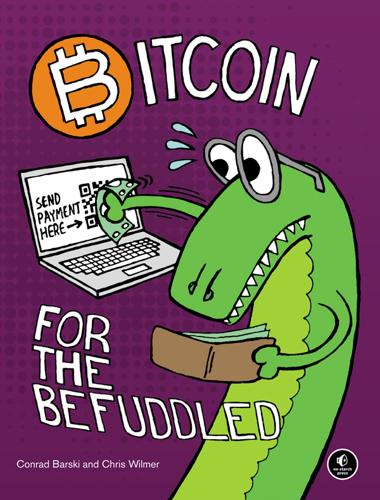
Bitcoin for the Befuddled
by
Conrad Barski
Published 13 Nov 2014
This economic philosophy argues, among other ideas, that the price of a unit of currency has the ability to adjust appropriately on its own, guaranteeing that purchases and savings in an economy will remain at desirable levels, no matter how many units of currency exist at any point in time in the economy. Bitcoin and Government Stability Some contend that a successful Bitcoin system would be harmful because it could destabilize governments. It has been debated that Bitcoin is part of a larger movement, recently termed radical decentralization, which maintains that all decentralization (including the functions of the government) is desirable and possible. This idea is a direct extension of the philosophies of Friedrich Hayek, who reasoned that local control is usually preferable to central control, because local people have more knowledge about local conditions and can therefore behave more efficiently in most situations.
…
See also security protocol, for Bitcoin, 112 public information, transactions as, 11 public key, 150 encryption, 91 master, 188 parable of, 141–145 reversing function of, 136 sharing, 156 public key cryptography, 133–135 public/private key pair, creating with ECDSA, 154 pushing, Bitcoin programming, 223 Python, 226 Q quick response (QR) codes, for Bitcoin address, 10 R Race Integrity Primitives Evaluation Message Digest (RIPEMD), 139–141, 188 radical decentralization, 126 random key generation, 187–190 randomness, for generating Bitcoin address, 39 relay node, 170 RelayRides, 67 remote servers, Electrum connection to, 15 retailers, acceptance of Bitcoin, 116 reversible transactions, 55–56 rewards, 170 from Bitcoin-mining lottery, 22 for transaction processing, 26 RIPEMD (Race Integrity Primitives Evaluation Message Digest), 139–141, 188 risks, to Bitcoin, 117–121 Rivest, Ron, 133–134 rounding errors, 235 and cryptography, 151 RSA encryption, 133–134, 137 Ruby, 226 S safety, of storage, 35 satoshi (bitcoin unit), 9 SatoshiLabs, 43 Satoshi Square, 71 savings, Bitcoin for, 121–122 scarcity, of currency, 118 Sean’s Outpost, 18 Secure Hash Algorithm (SHA), 139–141, 188 ASIC optimization to calculate, 174 security, 14, 118–119 of Bitcoin exchanges, 63 confidence in, 216–217 double hash scheme and, 156 SPV wallets vs. full wallets, 193–194 of storage, 35 seed, in Electrum, 14, 15 sending money from Bitcoin address, 236–239 code for, 238 SendRequest object, 238 settlement period, 55, 56 SHA (Secure Hash Algorithm), 139–141, 188 ASIC optimization to calculate, 174 Shamir, Adi, 133–134 Shamir’s Secret Sharing method, 42 shares, of mining reward, 176 side chains, 121 Silk Road website, 124 simplified payment verification (SPV), 191, 233 vs. full wallets, 193–195 single key generation wallet programs, 188 smartphones private keys on, 44 wallets on, 192 software as a service, 34 speed of payments, SPV wallets vs. full wallets, 193 spending bitcoins, 17–19 SPV (simplified payment verification), 191, 233 vs. full wallets, 193–195 SPVBlockStore object, 232, 233 stateless currencies, 2 storage, Bitcoin, 31–47 choosing method, 46–47 hot vs. cold, 33–34 of large amounts of bitcoins, 38–42 private key, 33 safety, security, and convenience, 35 of small amounts of bitcoins, 35–38 SPV wallets vs. full wallets, 194 Trezor, 43–45 summation, pseudocode for, elliptic curve cryptography, 158–159 symmetric key cryptography, 133 synchronization, SPV wallets vs. full wallets, 193 T Takhteyev, Yuri, 112n tangent to curve, elliptic curve cryptography, 150 thick wallets, 191 thin wallets, 192 third-party service provider, as bank, 33 timestamp, for block, 172 Tor, 127 trade volume, of exchange, 63 transaction confirmation, 25 transaction fees.
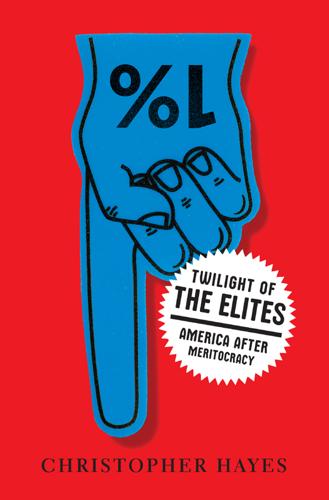
Twilight of the Elites: America After Meritocracy
by
Chris Hayes
Published 11 Jun 2012
In fact the Tea Party has taken as its organizational manifesto a book called The Starfish and the Spider: The Unstoppable Power of Leaderless Organizations. The idea behind the book is that if you have a leader, then the organization is only as good as that leader’s decision-making, whereas if you decentralize power, you are no longer pegged to the flaws of a small elite. It’s a way to rewrite Michels’s Iron Law. “In American politics, radical decentralization has never been tried on so large a scale,” wrote National Journal’s Jonathan Rauch. “Tea Party activists believe that their hive-like, ‘organized but not organized’ (as one calls it) structure is their signal innovation and secret weapon, the key to outlasting and outmaneuvering traditional political organizations and interest groups.… No foolish or self-serving boss can wreck it, because it has no boss.
…
Norton and Dan Ariely, “Building a Better America—One Wealth Quintile at a Time,” Perspectives on Political Science 6, no. 1 (2011): 9, http://www.people.hbs.edu/mnorton/norton%20ariely.pdf, accessed January 26, 2012. 22 “placing a surtax on federal income taxes for people earning over one million dollars a year”: NBC News/Wall Street Journal Survey, February 2011, p. 16, http://issuu.com/wsj.com/docs/wsj-nbcpoll03022011.pdf, accessed January 26, 2012. 23 A 2005 Pew study of more than eleven thousand Howard Dean volunteers and donors found that 80 percent had four-year college degrees: See “The Dean Activists: Their Profile and Prospects,” Pew Research Center for People & The Press, April 6, 2005, http://www.people-press.org/2005/04/06/the-dean-activists-their-profile-and-prospects/, accessed January 26, 2012. 24 The audience of Daily Kos and the more radical website Firedoglake are roughly similar: See demographic statistics at http://www.quantcast.com/firedoglake.com, and http://www.quantcast.com/dailykos.com, accessed February 22, 2012. 25 “You have a lot of kids graduating college, can’t find jobs”: See Kate Taylor, “Bloomberg, on Radio, Raises Specter of Riots by Jobless,” New York Times, September 16, 2011. 26 “POLL FINDS TEA PARTY BACKERS WEALTHIER AND MORE EDUCATED”: Kate Zernike and Megan Thee-Brenan, “Poll Finds Tea Party Backers Wealthier and More Educated,” New York Times, April 14, 2010. 27 “sheer unadulterated disgust for the wealthy”: The clip is available at http://mediamatters.org/mmtv/201106300012, accessed January 26, 2012. 28 “Ultimately I figured out that the real enemy of the people”: Author interview. 29 boasted a membership at its peak of more than 2 million: See Edwin Amenta, When Movements Matter: The Townsend Plan and the Rise of Social Security (Princeton, N.J.: Princeton University Press, 2006), p. 1. 30 “In American politics, radical decentralization has never been tried on so large a scale”: Jonathan Rauch, “Group Think: Inside the Tea Party’s Collective Brain,” National Journal, September 11, 2010. 31 “You’re creating a vision of the sort of society you want to have in miniature”: See “You’re Creating the Sort of Society You Want to Have in Miniature,” Ezra Klein’s Wonkblog, Washington Post, October 3, 2011.

Machinery of Freedom: A Guide to Radical Capitalism
by
David Friedman
Published 2 Jan 1978
Universities would have to offer substantial incentives to keep their better teachers from being drawn off into freelancing. Such incentives might take the form of effective market structures within the university, rewarding departments and professors for attracting students. Large universities would become radically decentralized, approximating free-market universities. Many courses would be taught by free-lancers, and the departments would develop independence verging on autarchy. Under such institutions the students, although they might have the help of advisory services, would have to take the primary responsibility for the structure of their own education.
…
Long live socialism. IF YOU WANT IT, BUY IT As the previous chapter suggests, there could exist a society which some socialists would call socialist but which I would regard as both capitalist and free. Such a society would be produced by combining the 'socialist' principle of worker control with radical decentralization and the market structure that such decentralization necessitates. There would be no central authority able to impose its will on the individual economic units. Coordination would be by exchange, trade, by a market. Instead of firms, the normal form of organization would be workers' cooperatives controlled by their workers.

Peer-to-Peer
by
Andy Oram
Published 26 Feb 2001
Nonetheless, Napster (http://www.napster.com), as the application whose rapid uptake and enormous impact on the music industry sparked the furor over peer-to-peer, deserves some significant discussion. One of the most interesting things about Napster is that it’s not a pure peer-to-peer system in the same way that radically decentralized systems like Gnutella and Freenet are. While the Napster data is distributed across millions of hard disks, finding that data depends on a central server. In some ways, the difference between MP3.com and Napster is smaller than it appears: one centralizes the files, while the other centralizes the addresses of the files.
…
Experience is already showing that a hierarchy is starting to emerge. Some users turn off file sharing. Even among those who don’t, some have more files, and some have better bandwidth. As in Orwell’s Animal Farm, all animals are equal, but some are more equal than others. While this idea is anathema to those wedded to the theory of radical decentralization, in practice, it is this very feature that gives rise to many of the business opportunities in the peer-to-peer space. It should give great relief to those who fear that peer-to-peer will lead to the leveling of all hierarchy and the end of industries that depend on it. The most effective way for the music industry to fight what they fear from Napster is to join the trend, and provide sites that become the best source for high-quality music downloads.
…
What’s more, it is also the key to many peer-to-peer business models. Controlling namespaces and resource discovery has turned out to be one of the key battlegrounds of the Web. From Network Solutions (which largely controls DNS registration) to Yahoo! and search engines, identifying and capitalizing on the ways that centralization impacts even radically decentralized systems has turned out to be one key to financial success. Instant messaging turns out to tell a similar story. The namespace of an instant messaging system, and the mapping of identity onto user addresses, is the key to those systems. You have only to witness the efforts of AOL to keep other instant messaging vendors from reaching its customers to understand just how important this is.

New Power: How Power Works in Our Hyperconnected World--And How to Make It Work for You
by
Jeremy Heimans
and
Henry Timms
Published 2 Apr 2018
Some new power communities don’t have any person or entity that meets this definition of owner. Instead, those communities have what we call platform stewards, who play recognizable but sometimes informal leadership roles that allow them to channel the energy of the broader community, create rules or norms, and define the structure of a platform. Even the most radically decentralized models, like the virtual currency Bitcoin, have seen such figures emerge. Though anyone is free to take Bitcoin’s code, adapt it, and create a new protocol for others to follow, only a handful of people have the power to “commit” code to the Bitcoin code base. These few have played a stewardship role in directing the technology.
…
“I think it’s genuinely harder to write such a book today than it was ten years ago.” To explain why, he describes a class he teaches every few years on the music industry and intellectual property. “What’s interesting is that if you teach the case of the music industry in the late 2000s, what you see is radical decentralization and breakup. When you teach it five years ago, it’s the beginning of the emergence of mid-level structures to allow artists to make a living. Voluntary donations, SoundCloud…Then you’re teaching it in 2016 and it’s basically all Spotify. It’s completely recentralized.” (You can imagine Carr rubbing his hands together in self-righteous glee.)
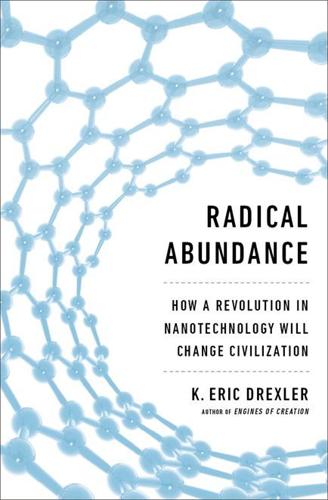
Radical Abundance: How a Revolution in Nanotechnology Will Change Civilization
by
K. Eric Drexler
Published 6 May 2013
In addition, small-scale, versatile, highly productive machinery can collapse globe-spanning industrial supply chains to just a few links, from raw materials to refined feedstock materials, from feedstocks to standardized microblocks, and then from microblocks to products that play roles as different as solar cells, spacecraft, car engines, concrete, computers, and medical instruments. Short supply chains and flexible production can enable radical decentralization. The second, atomic precision starts with small-molecule feedstocks, atomically precise by nature and often available at a low cost per kilogram. A sequence of atomically precise processing steps then enables precise control of the structure of materials and components, yielding products with performance improved by factors that can range from ten to over one million.
…
As we’ve seen, the Information Revolution provides an alternative model. Producing patterns of atoms using APM-based technologies once again resembles producing patterns of bits using information technologies. Rapid production based on multipurpose, scalable platforms; independence from long, specialized supply chains; the potential for radical decentralization; the pivotal role of software and online data; new products without costly new physical capital; low marginal costs of production and distribution; the potential for rapid, global deployment of new products—all these characteristics are shared by both APM and information technologies, yet all contrast sharply with the characteristics of modern industry.
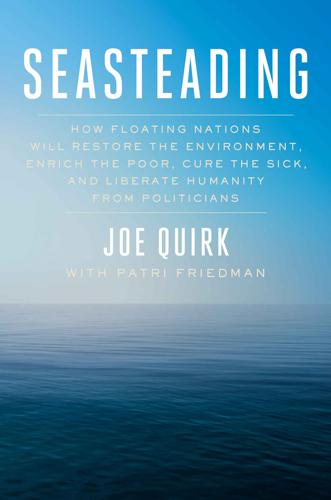
Seasteading: How Floating Nations Will Restore the Environment, Enrich the Poor, Cure the Sick, and Liberate Humanity From Politicians
by
Joe Quirk
and
Patri Friedman
Published 21 Mar 2017
See the Sea The globally emerging Blue Revolution became conscious of itself when Google engineer Patri Friedman realized that the economic theories elucidated by his grandfather, Milton Friedman, and developed by his father, David Friedman, would soon be put to the test by a rapidly approaching technology. Milton and David each asserted that political conflict was caused by political power, and that the solution to political conflict lay not in further consolidating power in the most virtuous government officials, but by the radical decentralization of power among millions of individuals with freedom and choice. How could such an organic bottom-up system work? In 1973 David published The Machinery of Freedom, describing the practical details, and Milton and his wife, Rose, later wrote Free to Choose, explaining the moral principles.
…
Imagine a thousand floating Venices with waterways for roads, except the components are modular. When individuals possessed the technology to settle the seas, they’d discover an aquatic world more than twice the size of Planet Earth, where citizens would engage in such fluidity of movement that tyrants would have a very hard time getting a foothold, and political power would be radically decentralized and shared. Floating cities that best pleased their inhabitants would expand, while others which failed to do so would decline and disappear. Democracy, a system by which majorities outvote minorities, would be upgraded to a system whereby the smallest minorities, including the individual, could vote with their houses.

Machine, Platform, Crowd: Harnessing Our Digital Future
by
Andrew McAfee
and
Erik Brynjolfsson
Published 26 Jun 2017
What kinds of documents, records, or transactions would you put in it? What partners—customers, suppliers, third parties, government entities, and so on—would you have join you? How much time and money do you think such a ledger could save you? 2. In order for it to be valuable to you, would this ledger also need to be radically decentralized, or could it be owned and controlled by one or more organizations? 3. How important might Bitcoin and other cryptocurrencies be to you? Are you planning to accept them as payment? 4. What would be the first “smart contracts” (contracts that execute 100% automatically) you would attempt to write?
…
— attributed to Winston Churchill (1874–1965) IN THIS ERA OF POWERFUL NEW TECHNOLOGIES, DO WE STILL need companies? Many observers assert that real alternatives to companies are now available. These alternatives make use of many of the digital innovations described in this book, especially the radically decentralized, crowd-based technologies of cryptocurrencies, distributed ledgers, and smart contracts that we described in the previous chapter. Companies are squarely at the core of modern capitalism, but as we’ve shown repeatedly throughout this section of the book, the core can often be beaten by a technology-enabled crowd.

Bit by Bit: How P2P Is Freeing the World
by
Jeffrey Tucker
Published 7 Jan 2015
And so it is with every driver in the sharing economy, every renter in the overnight-stay market, every buyer and holder of bitcoin, every lender on LendingTree. Welcome to the real world. It’s a wonderful place to live. How precisely the risk associated with investment is to be allocated in society cannot be foreseen by any planner or pundit. Risk allocation is for the market to discover. With P2P services, which are radically decentralizing the capitalist ethos, we are finding that workers actually want to bear more risk—in the hope of greater gain than wages alone could provide. Therefore, Asher-Schapiro is more or less correct in his conclusion: “there’s nothing innovative or new about this business model. Uber is just capitalism, in its most naked form.”
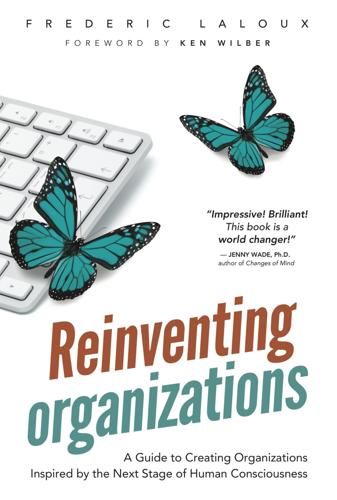
Reinventing Organizations: A Guide to Creating Organizations Inspired by the Next Stage of Human Consciousness
by
Frederic Laloux
and
Ken Wilber
Published 9 Feb 2014
Under Sant’s leadership as CEO until 1994, and then with Bakke at the helm, it grew from a two-person firm into a global energy producer employing 40,000 people in plants located in more than 30 countries around the world. AES became a Wall Street darling after it was publicly listed in 1991. For years, while the company was going from success to success, the board members were supportive of AES’s radically decentralized and trust-based decision-making. And yet as Bakke suspected, “Most board members loved the AES approach primarily because they believed it pushed the stock price up, not because it was the ‘right’ way to operate an organization.”131 In 1992, an unexpected problem confirmed Bakke’s suspicion that most board members were still firmly rooted in a command-and-control perspective.
…
A host of lawyers descended on the plant to “protect the assets.” … Several of our most senior people and board members raised the possibility that our approach to operations was a major part of the problems. It was as if the entire company were on the verge of ruin. They jumped to the conclusions that our radical decentralizations, lack of organizational layers, and unorthodox operating style had caused “economic” collapse. There was, of course, no real economic collapse. Only the stock price had declined. In addition, one of our senior vice presidents did a presentation to the board suggesting that “Protecting our Assets” rather than “Serving Electrical Needs” should be the top goal of the company.
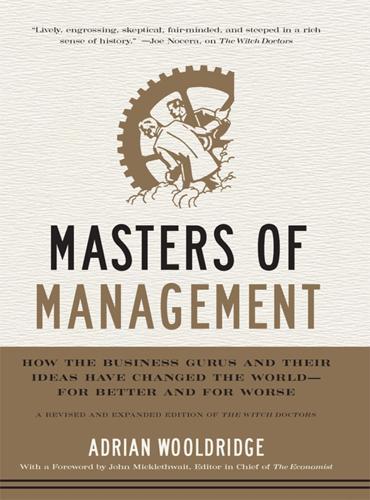
Masters of Management: How the Business Gurus and Their Ideas Have Changed the World—for Better and for Worse
by
Adrian Wooldridge
Published 29 Nov 2011
Wherever people grapple with tricky management problems, from big organizations to small ones, from the public sector to the private, and increasingly in the voluntary sector, you can find Drucker’s fingerprints. The range of his influence was extraordinary. He changed the course of thousands of businesses, including America’s most revered conglomerate, General Electric, where he spawned not one but two revolutions, first in the 1950s when GE followed his concept of radical decentralization, and second in the 1980s when Jack Welch rebuilt the company around Drucker’s belief that it should be first or second in a line of business or get out. George W. Bush, America’s first president with an MBA, was a devotee of Drucker’s idea of “management by objectives.” (“I had read Peter Drucker,” Karl Rove once told the Atlantic Monthly, “but I’d never seen Drucker until I saw Bush in action.”)
…
Drucker showed how GM’s decentralized structure enabled it to respond to the difficult challenges that faced it, such as the transition from war to peace.8 And other organizations such as Ford and General Electric rushed to copy it, blithely ignoring Drucker’s warning that he had doubts about the general applicability of the idea. By the 1980s, Drucker was credited with “moving 75–80 percent of the Fortune 500 to radical decentralization.”9 Drucker’s People As well as being a somewhat academic treatise on decentralization, The Concept of the Corporation was an unashamedly passionate plea for GM to treat labor as a resource rather than just as a cost. Drucker insisted that industrial relations ought to be based on people’s desire to be engaged in their job and proud of their product.
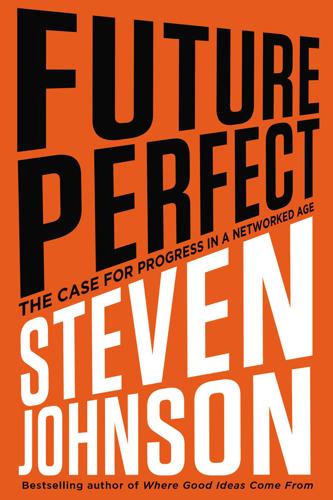
Future Perfect: The Case for Progress in a Networked Age
by
Steven Johnson
Published 14 Jul 2012
The creation of ARPANET and TCP/IP were milestones on many levels. They now rightly occupy a prominent place in the history of computing, communications, and globalization. But in a strange way, they should also be seen as milestones in the history of political philosophy. The ARPANET was a radically decentralized system that had somehow emerged out of a top-down government agency. The Baran Web showed that states did not have to create Legrand Stars, with their geometric lines and heavy centers. They could also create more fluid, dynamic structures that lacked hierarchies and centralized control. The ARPANET was like Hayek’s marketplace, with “dispersed bits of information” and no central authority, but somehow, against all odds, it wasn’t an actual marketplace.

The World's Banker: A Story of Failed States, Financial Crises, and the Wealth and Poverty of Nations
by
Sebastian Mallaby
Published 24 Apr 2006
Jaycox called an ex-colleague in a despondent mood: Wolfensohn understood nothing about Africa and didn’t want to learn from him.60 The boss understood more than the barons were admitting. His visit to Mali had taught him that the Bank could be popular when it put good people in the field; and he soon embarked on a radical decentralization. His stop in Côte d’Ivoire had sealed his determination to tackle debt, and over the next year he hammered on this issue, ultimately bringing the IMF and reluctant rich-country shareholders around to his position. His time in Uganda had confirmed his suspicion that the Bank’s NGO critics could sometimes be correct, and that the Bank’s own staff could be too arrogant to admit it.
…
Moreover, the idea that authority was decentralized to locally based Bank managers was not really true in practice; the Bank’s vice president for Latin America was closely involved in the Bolivia program, so decisions tended to flow up to his office in Washington.17 The vision of a streamlined Bank that got behind a politically legitimate, nationally owned development plan had been inspiring. But the wariness of the board and the naïve ebullience of the visionaries had combined to undermine a good idea. A little while later there was a fitting epilogue to the Bolivia story. Dennis Bakke vacated the executive suite with the statue of Jesus and St. Peter. His faith in radical decentralization had helped to land his firm in trouble, and his shareholders decided that head-office oversight is not so evil after all. The Bolivia fight almost buried Wolfensohn’s Comprehensive Development Framework, but Wolfensohn fought on. He flew off to Berlin the week after the disastrous board meeting and sold his idea directly to Europe’s development ministers.

Utopia for Realists: The Case for a Universal Basic Income, Open Borders, and a 15-Hour Workweek
by
Rutger Bregman
Published 13 Sep 2014
“The managers of these retail outlets and public houses had a high degree of information about their customers,” explains the economist Antoin Murphy. “One does not after all serve drink to someone for years without discovering something of his liquid resources.”8 In no time, people forged a radically decentralized monetary system with the country’s 11,000 pubs as its key nodes and basic trust as its underlying mechanism. By the time the banks finally reopened in November, the Irish had printed an incredible £5 billion in homemade currency. Some checks had been issued by companies, others were scribbled on the backs of cigar boxes, or even on toilet paper.
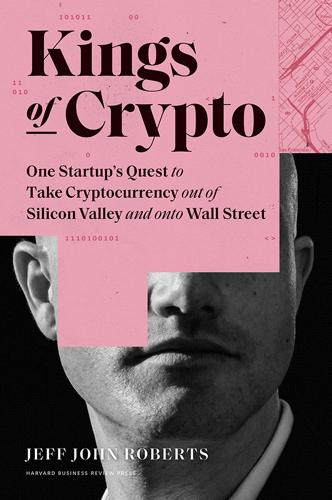
Kings of Crypto: One Startup's Quest to Take Cryptocurrency Out of Silicon Valley and Onto Wall Street
by
Jeff John Roberts
Published 15 Dec 2020
It was inevitable that as bitcoin grew, people without the same agenda as the libertarian types in the Valley would find useful apps for blockchain’s ledger technology, and that’s what was happening. “Blockchain, not bitcoin” meant you were part of the group that wanted to use the technology bitcoin had pioneered without the radical decentralized system that let anyone in the world be part of it—a members-only system that produced a tamper-proof common ledger similar to the bitcoin one. For banks and big companies, “blockchain, not bitcoin” promised all of the innovative parts of Satoshi Nakamoto’s creation minus the controversy, amateurish oversight, and sketchy figures.

Rebel Cities: From the Right to the City to the Urban Revolution
by
David Harvey
Published 3 Apr 2012
m ay correctly be depicted as embodying everything that is wrong about hierarchical forms of gov ernance, the alternative imaginary of thousands upon thousands of autonomous municipalities fiercely defending their autonomy and their 84 R E B E L C I T I ES turf while endlessly (and undoubtedly acrim oniously) negotiating their position within Europe-wide divisions of labor is hardly alluring. How can radical decentralization-surely a worthwhile objective work without constituting some higher-order hierarchical authority? It is simply naive to believe that polycentrism or any other form of decen tralization can work without strong hierarchical constraints and active enforcement. Much of the radical left-particularly of an anarchist and autonomist persuasion-has no answer to th is problem.
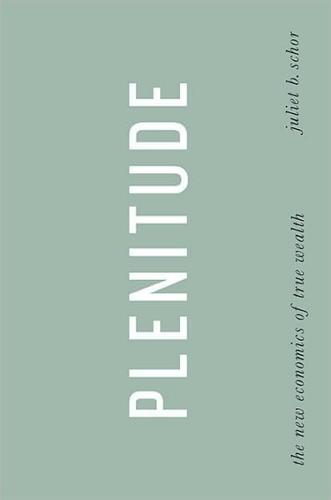
Plenitude: The New Economics of True Wealth
by
Juliet B. Schor
Published 12 May 2010
This is how Linux, Wikipedia, and a growing number of extraordinary products have been developed. Belief in the viability of an alternative production model is growing among the technorati, as Benkler argues: “The networked environment makes possible a new modality of organizing production: radically decentralized, collaborative and nonproprietary; based on sharing resources and outputs among widely distributed, locally connected individuals who cooperate with each other without relying on either market signals or managerial comments.” If I am right that knowledge is the scarce resource in the transition to sustainability, then it’s a limiting factor in the growth of the clean sector.
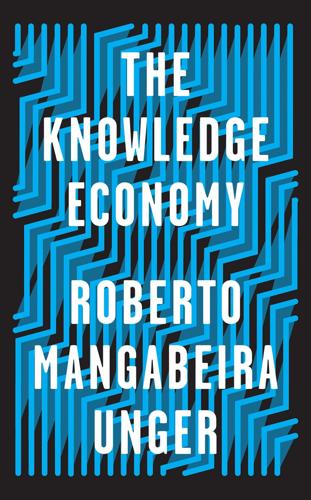
The Knowledge Economy
by
Roberto Mangabeira Unger
Published 19 Mar 2019
The second set of reforms has to do with the demotion of the patent and copyright laws in their present form to one of several ways of compensating innovators and organizing the use of their discoveries and inventions. Data should belong to the individuals who generate them, as part of the expression of personality in society. Those who use data for economic gain should win consent for their use and pay for them. The radical decentralization of property in data—a vital input of much of the knowledge economy—would encourage a wide range of varieties of compensation other than the payment of a rent by the data user to the data generator. Such alternative variants of remuneration would include fractional equity stakes. The stakes can in turn be pooled in a secondary market that would monetize and trade them.

Reinventing Capitalism in the Age of Big Data
by
Viktor Mayer-Schönberger
and
Thomas Ramge
Published 27 Feb 2018
But there is still another reason that Spotify chose the squadification approach. Once we push aside the communitarian language and the seeming affinity for small, adaptive, loosely organized groups, we see that the company is injecting a piece of market DNA into its structure. After all, decentralized decision-making is the hallmark of the market. Introducing such radical decentralization into a firm invites bits of the market inside. Spotify is an intriguing example of a firm intent on avoiding turning into a traditional firm by opting to be an organizational hybrid: part firm, part market. Introducing the market into the firm isn’t a radically new idea. There are many variations, but what unites them all is the delegation of some managerial decision-making to fundamentally decentralized, more market-like mechanisms.

Exponential Organizations: Why New Organizations Are Ten Times Better, Faster, and Cheaper Than Yours (And What to Do About It)
by
Salim Ismail
and
Yuri van Geest
Published 17 Oct 2014
As a result, we predict the lightweight OKR approach will gradually replace traditional top-down managerial oversight. Furthermore, many Exponential Organizations are organizing internally—though not in traditional departments with layers of middle management, but rather by self-organized, interdisciplinary teams and with radically decentralized authority. The Millennial generation, armed with Internet and gaming skills, which cultivate a self-starter and entrepreneurial mindset, is increasingly at odds with classic hierarchical structures that are optimized for efficiency over adaptability. Ed Catmull, co-founder of Pixar Animation Studios and president of Pixar Animation and Walt Disney Animation, expands on this idea in his New York Times bestselling book, Creativity, Inc.: Overcoming the Unseen Forces That Stand in the Way of True Inspiration: “We start from the presumption that our people are talented and want to contribute.
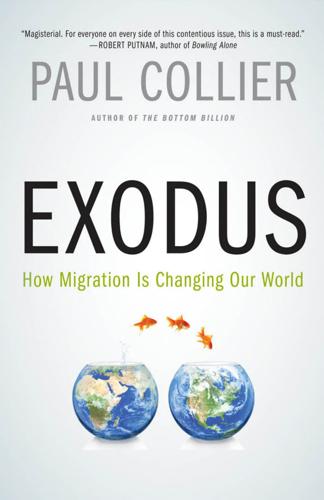
Exodus: How Migration Is Changing Our World
by
Paul Collier
Published 30 Sep 2013
Pressed on where he felt most at home, he chose a village in France. I cannot imagine a French ambassador volunteering an equivalent sentiment. Both Canada and Belgium manage to sustain high incomes despite their weak national identities, but their solution has been complete spatial segregation between the different language groups, combined with radical decentralization of political authority to these subnational territories. For practical purposes of public service delivery, Canada and Belgium are four states with cohesive identity, not two states without it. In Britain the acceptability of national identity is confused because of the relatively recent multinational composition of Britain from its component parts: nobody in Britain, except for some immigrants, thinks of themselves as primarily British.
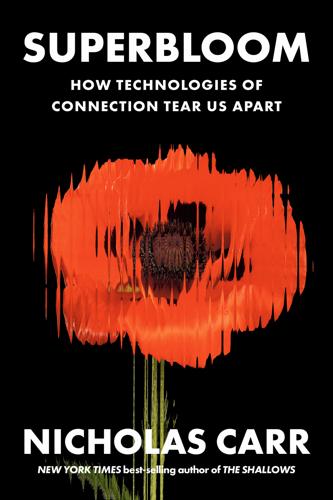
Superbloom: How Technologies of Connection Tear Us Apart
by
Nicholas Carr
Published 28 Jan 2025
But, with eight more years of experience to draw on, he pushed the case much further. Across five hundred pages of dense, suitably technocratic prose, he argued that “the Internet revolution” was well on its way to supplanting mass media’s centralized “industrial information economy” with a radically decentralized “networked public sphere.” Spurring the epochal transformation were two developments, one technical, the other economic: The first element is the shift from a hub-and-spoke architecture with unidirectional links to the end points in the mass media, to distributed architecture with multidirectional connections among all nodes in the networked information environment.
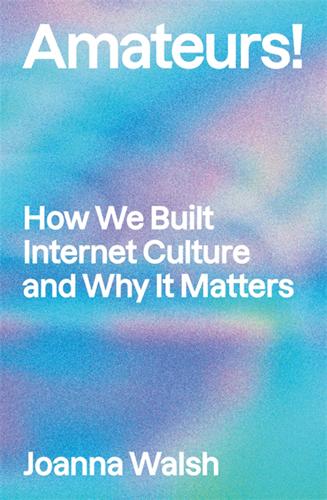
Amateurs!: How We Built Internet Culture and Why It Matters
by
Joanna Walsh
Published 22 Sep 2025
Hence everything is production.’8 The central box contains strategic positioning points, user positioning, and core competencies including services not packaged software, architecture of participation, cost-effective scalability, remixable data source and data transformations, software above the level of a single device, and harnessing collective intelligence. Surrounding terms on the top include Flickr tagging, Google services, PageRank, blogs, Wikipedia radical trust and BitTorrent radical decentralization. Surrounding term at the bottom include an attitude, not a technology; the long tail; data as the intel inside; the perpetual beta; software that gets better the more people use it; play; rich user experience; small pieces loosely joined, web as components; trust your users; hackability; the right to remix some rights reserves; emergent: user behaviour not predetermined; and granular addressability of content.
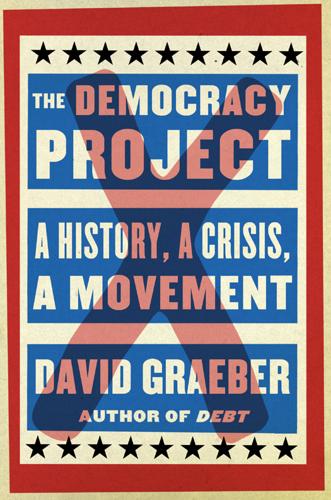
The Democracy Project: A History, a Crisis, a Movement
by
David Graeber
Published 13 Aug 2012
But most important, do not bring proposals before a larger group unless there is a compelling reason. This is absolutely essential. In fact it’s so important I will give it an entire section of its own. DO NOT SUBMIT A PROPOSAL FOR CONSENSUS UNLESS THERE IS A COMPELLING REASON TO DO SO Consensus process only works if it is combined with a principle of radical decentralization. I really can’t stress this enough. If there is any silver lining to the cumbersome nature of formal consensus process, it’s precisely this: that it discourages people bringing proposals before a General Assembly or Spokescouncil or other large group unless they really have to. It’s always better, if possible, to make decisions in smaller groups: working groups, affinity groups, collectives.

Green Swans: The Coming Boom in Regenerative Capitalism
by
John Elkington
Published 6 Apr 2020
One suggestive idea is that all significant technologies, including new algorithms, should be subjected to FDA-style trials like those applied to new drugs.16 Work such as that carried out by WEF is helpful, of course, but even their longish list of disruptive technologies is only scratching the surface. It misses a wide range of other technologies that are bubbling under, or actively brimming over into today’s world. With the development of many of these technologies now radically decentralized, and with biohackers working in garages with little or no government supervision, something more is needed to ensure that Gray and Black Swan risks are minimized and Green Swan opportunities optimized. Good intent will not be enough to ward off the inevitable dangers and crises. Indeed, it is worth remembering that each of the Black Swans covered in Chapter 3 began as some form of Green Swan, a technology that at the time was seen to offer significant advantages over what had gone before.
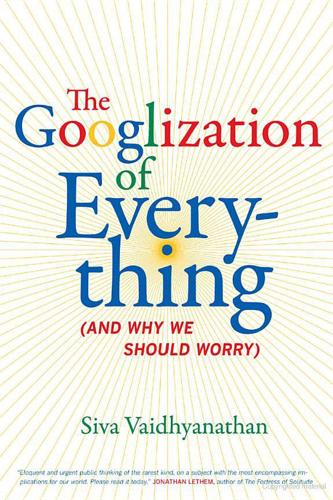
The Googlization of Everything:
by
Siva Vaidhyanathan
Published 1 Jan 2010
“If the workers of the industrial factory found themselves laboring in an iron cage, the workers of many of today’s post-industrial information firms often find themselves inhabiting a velvet goldmine: a workplace in which the pursuit of selffulfillment, reputation, and community identity, of interpersonal relationships and intellectual pleasure, help to drive the production of new media goods,” Turner writes.50 Google’s founders, Larry Page and Sergey Brin, have been regular Burning Man attendees since the 1990s. At the festival, Page and Brin would have encountered a radically decentralized social structure, one that facilitates creativity, collaboration, and experimentation with little or no “command and control.” Burning Man, Turner concludes, is a distillation of the “cultural infrastructure” that nurtures Google, a spiritual manifestation of what Yochai Benkler calls “commons-based peer production.”51 As the sociologist Dalton Conley has described, many of the most highly rewarded workers—those on the creative side of the technology industries—are either trapped in something like a velvet goldmine or struggling to get into one.
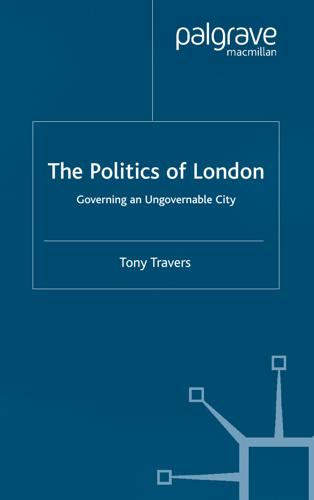
The politics of London: governing an ungovernable city
by
Tony Travers
Published 15 Dec 2004
In Tower Hamlets, the relationship with the LDDC was conditioned in part by the way the borough was administered and also by its political control. In the early days, the relationship was adversarial; there was significant friction between the Corporation and the Labour group that ran the council. 40 The Politics of London In 1986 the Liberal Democrats took control, and brought in radical decentralization, with power being devolved to neighbourhoods. There were two Docklands neighbourhood committees, the Isle of Dogs and Wapping, both of which were Labour-controlled. While there were tensions between the neighbourhoods and the centre, the relationship between the neighbourhoods and the LDDC steadily improved.

Servant Economy: Where America's Elite Is Sending the Middle Class
by
Jeff Faux
Published 16 May 2012
In his book The Affluent Society, John Kenneth Galbraith argued that the problem of production had been solved; now the question was how to distribute its benefits. Economist Robert Theobold argued for putting the benefits of rising productivity into a reduced workweek so that citizens could have more leisure time to cultivate their lives outside the market. British economist E. F. Schumacher made the case for radically decentralizing economic power and production. In 1964, a group of liberal academics and activists signed a memorandum to President Johnson outlining an economic vision called the Triple Revolution. They argued that with automation and computerization, society would need fewer and fewer workers. Rather than allowing the market to translate that process into joblessness and the pressure to lower wages, society should take it as an opportunity to end poverty, spread wealth more evenly, and increase public spending on health, education, and culture.
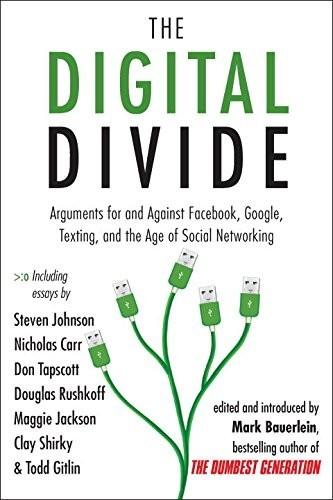
The Digital Divide: Arguments for and Against Facebook, Google, Texting, and the Age of Social Netwo Rking
by
Mark Bauerlein
Published 7 Sep 2011
Wales is optimistic about the Internet, too. “There’s a certain kind of dire anti-market person,” he says, “who assumes that no matter what happens, it’s all driving toward one monopoly—the ominous view that all of these companies are going to consolidate into the Matrix.” His own view is that radical decentralization will win out, to good effect: “If everybody has a gigabit [broadband Internet connection] to their home as their basic $40-a-month connection, anybody can write Wikipedia.” Wales’s optimism isn’t without perspective. After reading Tom Standage’s book about the impact of the telegraph, The Victorian Internet, he was “struck by how much of the semi-utopian rhetoric that comes out of people like me sounds just like what people like them said back then.”

Radical Markets: Uprooting Capitalism and Democracy for a Just Society
by
Eric Posner
and
E. Weyl
Published 14 May 2018
Indeed, as we will argue below, the government’s role would be more limited than it is today because there would be no need for discretionary interventions, like eminent domain or public ownership of property in the conventional sense, to solve holdout and other monopoly-related problems. There would also be much less need for distortionary and discretionary government taxes to raise revenue for the state. Furthermore, control of everything would be radically decentralized; a COST thus combines extreme decentralization of power with partial socialization of ownership, showing that they are, perhaps surprisingly, two sides of the same coin. Far from creating a form of centralized planning, the COST creates a new kind of market—a flexible market in uses, to replace the old market based on permanent ownership.
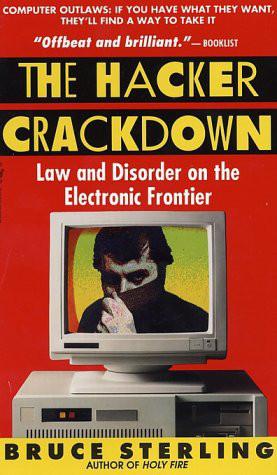
The Hacker Crackdown
by
Bruce Sterling
Published 15 Mar 1992
Netsys was not a stand-alone machine, but part of the globe-spanning "UUCP" cooperative network. The UUCP network uses a set of Unix software programs called "Unix-to-Unix Copy," which allows Unix systems to throw data to one another at high speed through the public telephone network. UUCP is a radically decentralized, not-for-profit network of UNIX computers. There are tens of thousands of these UNIX machines. Some are small, but many are powerful and also link to other networks. UUCP has certain arcane links to major networks such as JANET, EasyNet, BITNET, JUNET, VNET, DASnet, PeaceNet and FidoNet, as well as the gigantic Internet.
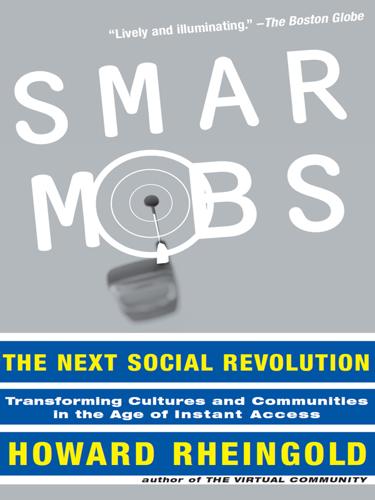
Smart Mobs: The Next Social Revolution
by
Howard Rheingold
Published 24 Dec 2011
Policymakers, faced with the opportunity to create an innovation commons for the wireless Internet, want to sell the right to innovate to the highest bidder.We’re at a critical point where we’re choosing which path to go down, and the problem is that most people in wireless policymaking are control freaks. They’re the Soviets of our time. They think the only way to run an economy is if the government decides who uses spectrum for what purposes. I fear that the Soviet mentality will destroy innovation here. Instead of top-down control, we need radical decentralized opportunity to innovate and create using this medium. —Lawrence Lessig Unwiring the World, One Neighborhood at a Time I had heard übergeek friends rhapsodize about “wireless freenets” and something called “eight oh two dot eleven bee,” but I never watched anyone pull an Internet connection out of the air until Lars Aronsson, instigator of Elektrosmog, flipped open his laptop and surfed the Web from a café near Stockholm’s Sergel Square.
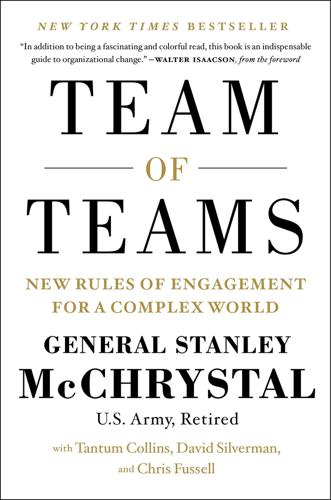
Team of Teams: New Rules of Engagement for a Complex World
by
General Stanley McChrystal
,
Tantum Collins
,
David Silverman
and
Chris Fussell
Published 11 May 2015
Maintain this system for too long without decentralizing authority, and whatever morale gains were made will be reversed as people become frustrated with their inability to act on their new insights. Just as empowerment without sharing fails, so does sharing without empowerment. Shared consciousness is a carefully maintained set of centralized forums for bringing people together. Empowered execution is a radically decentralized system for pushing authority out to the edges of the organization. Together, with these as the beating heart of our transformation, we became a single, cohesive unit far more agile than its size would suggest. Unlike the items in a MECE checklist, neither of these can be instituted alone; only when fused can they power an organization.

Superminds: The Surprising Power of People and Computers Thinking Together
by
Thomas W. Malone
Published 14 May 2018
The online nature of the interactions allows people to rapidly shift their attention from one topic to another, and it allows people from a huge group to form an ever-shifting constellation of many parallel small groups, each of which works temporarily on a specific article or other topic. And that, in turn, makes the radically decentralized consensus process work in a way it almost certainly couldn’t in a large face-to-face group. Communities of Practice Community of practice is a term for a community of people who do the same kind of work and learn how to do it better from interacting with one another.4 A classic example of this was described by anthropologist Julian Orr, a former colleague of mine when I worked at Xerox’s Palo Alto Research Center (PARC).

Crack-Up Capitalism: Market Radicals and the Dream of a World Without Democracy
by
Quinn Slobodian
Published 4 Apr 2023
If new groups could make claims, then what if they began to make them as clients of services rather than as members of a national community? There was something genuinely ideological about this vision of a world of tax havens that the mythology around Liechtenstein helps us to understand. It was not merely escape or exit in the negative sense but a fully formed philosophy of radical decentralization with secession as an ever-present option. The billionaire prince promoted his vision through the Liechtenstein Institute on Self-Determination, founded in Princeton with a $12 million gift, as well as the Liechtenstein Foundation for Self-Governance, which seeks to disseminate the country’s model abroad.
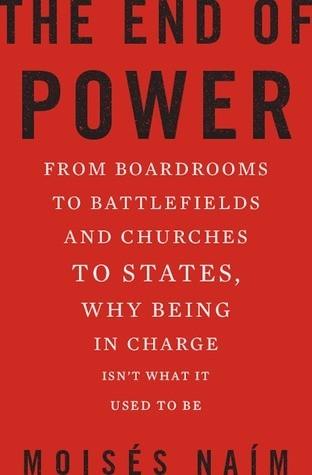
The End of Power: From Boardrooms to Battlefields and Churches to States, Why Being in Charge Isn’t What It Used to Be
by
Moises Naim
Published 5 Mar 2013
But while the flaws of most parties are often unquestionable, their demise implies the disappearance of important reservoirs of highly specific knowledge that are not easy to replicate by the alluring newcomers—many of which tend to be what Swiss historian Jacob Burckhardt called “terrible simplifiers,” the demagogues who seek power by exploiting the ire and frustration of the population and making appealing but “terribly simplified” and, ultimately, deceitful promises.9 The same holds for the experience of large firms as employers and investors. Micro-enterprises, pop-up stores, venture funds, social networks, and the like have a hard time replicating a large firm’s accumulated intellectual capital. The radical decentralization of knowledge—from Wikipedia to open-source software development to MIT course material available free online—is one of the most exciting trends in the dispersion of power. But the ability of these new sources of knowledge to match internal R&D or preserve institutional memory is inconsistent at best.
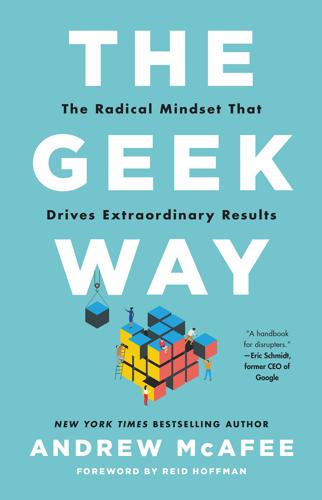
The Geek Way: The Radical Mindset That Drives Extraordinary Results
by
Andrew McAfee
Published 14 Nov 2023
In chapter 5, on the great geek norm of ownership, we saw how Jeff Bezos, who “makes ordinary control freaks look like stoned hippies,” realized that he had to give up a great deal of control if he wanted to prevent Amazon from becoming a bureaucratic mess. The company replaced its centralized, tightly controlled innovation process with a radically decentralized one characterized by two-pizza teams and (later) single-threaded leaders. As part of his work to get Microsoft back on track, Satya Nadella made a similarly large and bold move: he took away unilateral ownership and control of core resources like data and code throughout the company, and made them available to all who wanted to work with them.

Democracy Incorporated
by
Sheldon S. Wolin
Published 7 Apr 2008
Their intellectual genealogy can be traced directly to a particular text, Adam Smith’s Wealth of Nations, which appeared in 1776 at the outbreak of the American Revolution—a sign not to be lightly dismissed as a mere coincidence. It was written to oppose “mercantilist theories” that assigned to the state an active role in regulating and promoting economic activity. Smith offered a sharply opposed vision of the economy as radically decentralized, largely unregulated, consisting of small-scale producers—in short, virtually autonomous (laissez-faire). In place of an explanation (the economy was supervised by the state for the common good), Smith offered a miracle. The decisions of countless individual actors, each acting for his own self-interest, would nonetheless produce the well-being of the society, a state of affairs that the actors had not intended.
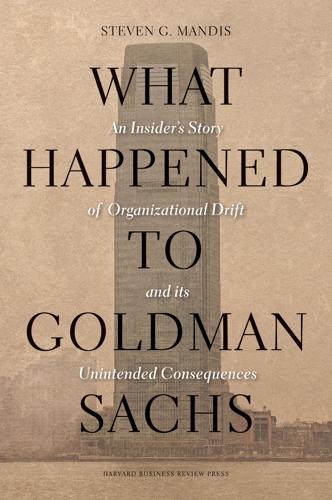
What Happened to Goldman Sachs: An Insider's Story of Organizational Drift and Its Unintended Consequences
by
Steven G. Mandis
Published 9 Sep 2013
Stark notes that when faced with uncertainty, “instead of concentrating their resources for strategic planning among a narrow set of senior executives or delegating that function to a specialized department, heterarchical firms [flat organizations or those with a limited hierarchy] embark on radical decentralization in which every unit becomes engaged in innovation.”44 Therefore, hierarchical firms—those with a long chain of command—are less supportive of innovation and entrepreneurship. Dissonance—supported by the flat organizational structure that facilitated interaction and information transfer, and the financial interdependence of partnership that fostered trust and aligned interests—gave Goldman a significant competitive advantage.

Democracy and Prosperity: Reinventing Capitalism Through a Turbulent Century
by
Torben Iversen
and
David Soskice
Published 5 Feb 2019
In a hugely cited book, Labor and Monopoly Capitalism: The Degradation of Work in the Twentieth Century, written originally in 1974, Harry Braverman argued that the computer would lead to mass deskilling and, in effect, the centralization of economic power (Braverman 1998). But in fact transformation has gone in a radically decentralized direction, as the individual console has put greater and greater computer power in the hands of the individual. Our approach is not technologically deterministic: it could be plausibly answered that Braverman could have been right had the development of computing remained under central control, either by governments (as it might have been in the Soviet Union) or by great corporations with monopoly control over product and labor markets.

Blockchain Revolution: How the Technology Behind Bitcoin Is Changing Money, Business, and the World
by
Don Tapscott
and
Alex Tapscott
Published 9 May 2016
“Massive intelligence on a decentralized global computational substrate, an underlying layer, should change the architecture of the firm from a large collection of specialized departments run by humans to software agents that can cooperate and compete in free markets.” Some agents will organize for longer periods of time to serve ongoing customer needs, such as utility and maintenance. Others will swarm around a short-term problem, solve it, and dissolve just as quickly, having served their purpose. Is there a risk that radical decentralization and automation removes human agency in decision making (e.g., the risk of rogue algorithms)? “I am not concerned about machine intelligence. We will evolve with it and for a long time it will be in the service of, or an aspect of, Homo sapiens cybernetica. It may evolve beyond us but that is fine,” Lubin said.

Hacking Politics: How Geeks, Progressives, the Tea Party, Gamers, Anarchists and Suits Teamed Up to Defeat SOPA and Save the Internet
by
David Moon
,
Patrick Ruffini
,
David Segal
,
Aaron Swartz
,
Lawrence Lessig
,
Cory Doctorow
,
Zoe Lofgren
,
Jamie Laurie
,
Ron Paul
,
Mike Masnick
,
Kim Dotcom
,
Tiffiniy Cheng
,
Alexis Ohanian
,
Nicole Powers
and
Josh Levy
Published 30 Apr 2013
Many of my supporters first heard about my campaign via YouTube or other online videos of my speeches and campaign events. These converts quickly began sharing information with others. They also used the Internet to coordinate activities and events organically, without any centralized coordination with my official campaign. This radical, decentralized, organic support for my campaigns—with the Internet serving as the primary organizing tool—was an incredible demonstration of true “grassroots” organizing. This army of mostly young, Internet savvy activists is what enabled my campaigns to overcome the deeply biased mainstream media’s virtual blackout, allowing my campaign to outperform several better-funded candidates.
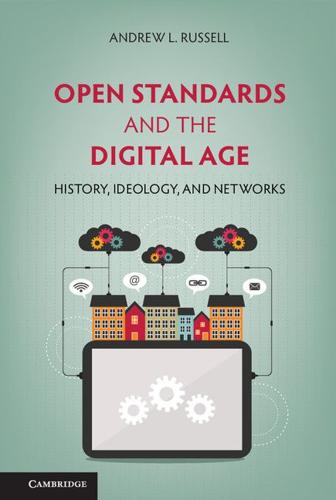
Open Standards and the Digital Age: History, Ideology, and Networks (Cambridge Studies in the Emergence of Global Enterprise)
by
Andrew L. Russell
Published 27 Apr 2014
For example, Harvard law professor Jonathan Zittrain generalized from his reading of the Internet’s architectural history to propose a “procrastination principle” built on the assumption that “most problems confronting a network can be solved later or by others.” This principle, Zittrain argued, “suggests waiting for problems to arise before solving them.”5 Two important points emerge from this new conventional wisdom that casts the Internet as a radically decentralized open system, capable of facilitating a new style of “organizing without organizations.” First, it indicates that Internet advocates, popular writers, and the general public have a poor understanding of the Internet’s history. The Internet, like many technological novelties that preceded it, provokes fantasies that its history does not support.
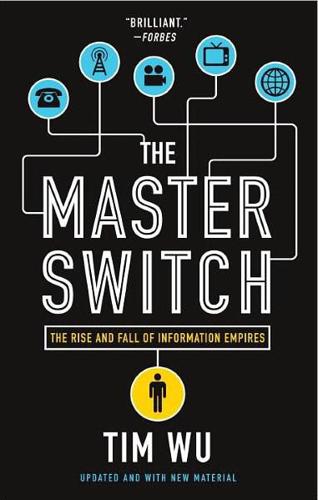
The Master Switch: The Rise and Fall of Information Empires
by
Tim Wu
Published 2 Nov 2010
While all else was being consolidated, the 1990s would also see the so-called Internet revolution, though amid its explosive growth no one could see where the wildly open new medium would lead. Would the Internet usher in a reign of industrial openness without end, abolishing the Cycle? Or would it, despite its radically decentralized design, become in time simply the next logical target for the insuperable forces of information empire, the object of the most consequential centralization yet? Part V will lead us to that ultimate question, the answer to which is as yet a matter of conjecture, for which, I argue, our best basis is history.
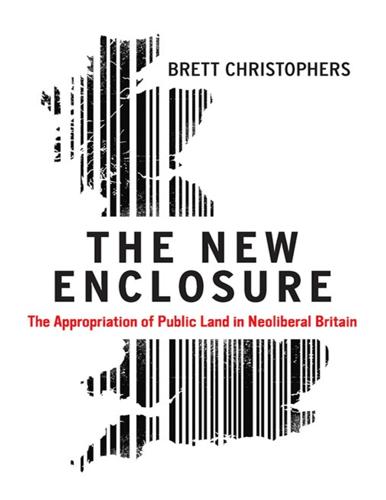
The New Enclosure: The Appropriation of Public Land in Neoliberal Britain
by
Brett Christophers
Published 6 Nov 2018
But after a decade of travails, in 1990 the PSA was wound up and split into two, with the state maintaining the property management arm (renamed Property Holdings) while the construction arm became a commercial entity. And then, in 1996, all responsibility for land-and-property holdings was devolved to individual departments. Later described in one report as creating a ‘departmental silo’ system, and in another as creating an ‘autonomous string of castles’, this radically decentralized new scheme of things would explicitly militate against any subsequent attempt to set and execute overall estate strategy centrally.1 So when, in the 2000s, Whitehall decided to begin to set targets for space reduction, and thus surplus creation – and also, as we shall see, for surplus disposal – it decided to do something about this silo system.

The Future of the Internet: And How to Stop It
by
Jonathan Zittrain
Published 27 May 2009
Yochai Benkler has examined the opportunities for the democratization of cultural participation offered by the Internet through the lens of liberal political theory: The networked information economy makes it possible to reshape both the “who” and the “how” of cultural production relative to cultural production in the twentieth century. It adds to the centralized, market-oriented production system a new framework of radically decentralized individual and cooperative nonmarket production. It thereby affects the ability of individuals and groups to participate in the production of the cultural tools and frameworks of human understanding and discourse. It affects the way we, as individuals and members of social and political clusters, interact with culture, and through it with each other.
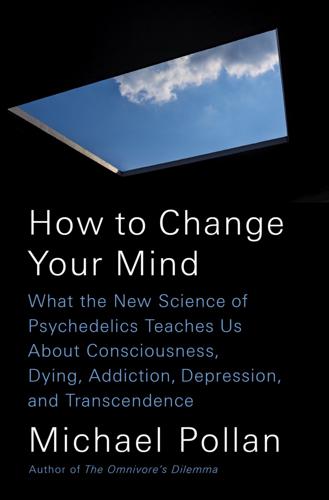
How to Change Your Mind: What the New Science of Psychedelics Teaches Us About Consciousness, Dying, Addiction, Depression, and Transcendence
by
Michael Pollan
Published 30 Apr 2018
But how do we even begin to conceive of the sense that allows bees to register (through the hairs on their legs) the electromagnetic fields that plants produce? (A weak charge indicates another bee has recently visited the flower; depleted of nectar, it’s probably not worth a stop.) Then there is the world according to an octopus! Imagine how differently reality presents itself to a brain that has been so radically decentralized, its intelligence distributed across eight arms so that each of them can taste, touch, and even make its own “decisions” without consulting headquarters. * * * • • • WHAT HAPPENS WHEN, under the influence of psychedelics, the usually firm handshake between brain and world breaks down?
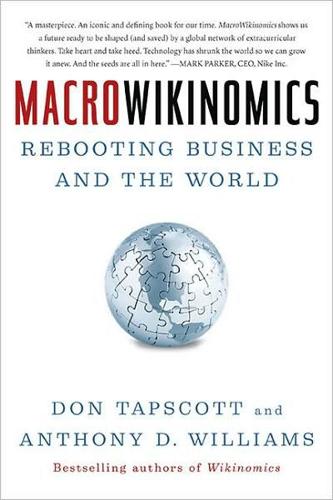
MacroWikinomics: Rebooting Business and the World
by
Don Tapscott
and
Anthony D. Williams
Published 28 Sep 2010
Secretary of State for Environment, quoted in “Carbon emissions: Now it’s getting personal,” New York Times (June 20, 2007). 16. Richard MacManus, “IBM and the Internet of Things,” ReadWriteWeb (July 22, 2009). 17. “World electricity: The smart grid era,” Economist (June 5, 2009). 18. “SMART 2020: Enabling the low carbon economy in the information age,” The Climate Group (2008). 19. The argument in favor of radically decentralizing energy production is also subject to the specifics of geography. The southwestern United States, for example, has both sun and land in abundance, which makes desolate areas like the Mojave Desert ideal for large-scale solar power generation. In more northerly latitudes, where land and sun are more sparing, the economics are different.
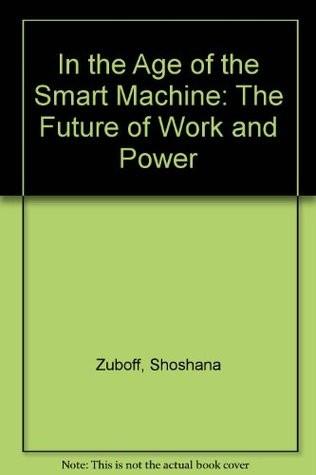
In the Age of the Smart Machine
by
Shoshana Zuboff
Published 14 Apr 1988
When text is confined to concrete objects, such as books or pieces of paper, it generates pressures for centralization (you must go to the text if you 180 KNOWLEDGE AND COMPUTER-MEDIATED WORK want to read it) or for possession (you can own the book or maintain your own files). The electronic text is the result of an even more radical centralization: a wide range of information can be gathered and codi- fied in a single computer system. However, this radical centralization enables an equally radical decentralization: in principle, the text can be constituted at any time from any place. The contents of the elec- tronic text can infuse an entire organization, instead of being bundled in discrete objects, like books or pieces of paper. Finally, the electronic text does not have an author in the conven- tional sense.
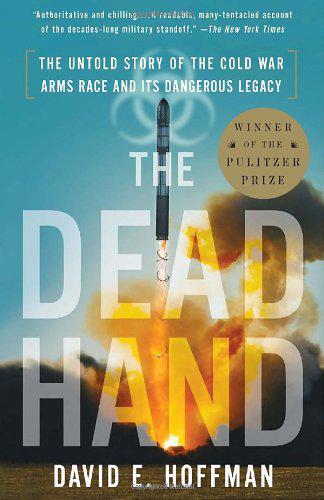
The Dead Hand: The Untold Story of the Cold War Arms Race and Its Dangerous Legacy
by
David Hoffman
Published 1 Jan 2009
But who would I leave it to? I'm so tired."21 Gorbachev took Chernyaev with him on the holiday to Foros in the Crimea. After lunch on Sunday, August 18, Gorbachev went to work on his speech about the new union treaty. He planned to fly back to Moscow on Monday for the ceremony on Tuesday. The treaty would radically decentralize the Soviet Union by giving the republics broad new powers, including control over their own resources. On Sunday, the hardliners swung into action.22 On the grounds of Gorbachev's resort compound, code-named Zarya, or Dawn, duty officers stood by with a suitcase for command of the Soviet nuclear forces.
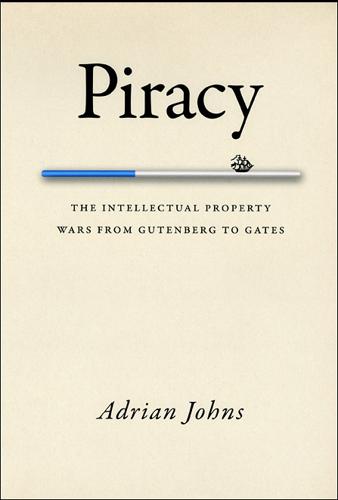
Piracy : The Intellectual Property Wars from Gutenberg to Gates
by
Adrian Johns
Published 5 Jan 2010
Piracy conflicts demanded some specification of the roles of home and state in creativity and commerce. They also required some account of how to police domestic activities in a liberal democracy. But home copying terrified the culture industries in their formative years of the midtwentieth century more than prior piracies because it implied a radical decentralization of cultural production. What made this possibility plausible was the reception accorded to one of the technologies appropriated by America from the ruins of Nazi Germany: magnetic tape. Reeltoreel tape machines became a presence in many U.S. households by the late 1940s. Although cumbersome by the standards of later incarnations, they made recording and copying far easier than they had ever been before.

The Power Law: Venture Capital and the Making of the New Future
by
Sebastian Mallaby
Published 1 Feb 2022
Likewise, Sean Parker had been in trouble with the law, not to mention with power brokers such as Moritz; Thiel nonetheless embraced him. To banish consensual thinking, Founders Fund broke with the industry practice of Monday partnership meetings, replacing the Sand Hill Road tradition of collective responsibility with radical decentralization. Founders Fund investors sourced deals independently, even writing some small checks without consulting one another. Bigger bets required consultation—the bigger the check, the more partners had to assent—but even the biggest investments did not require a majority to vote in favor. “It usually takes one person with a lot of conviction banging their fist and saying, ‘This needs to be done,’” one partner explained, by way of summary.[52] Like Soros’s, Thiel’s philosophical interests convinced him of the case for unusually aggressive risk-taking.
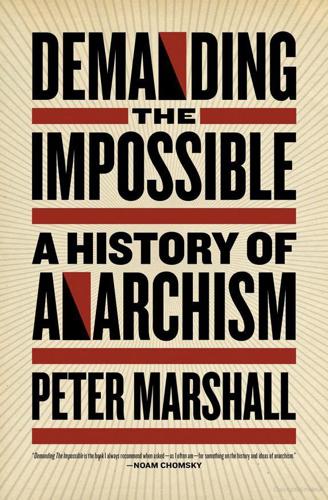
Demanding the Impossible: A History of Anarchism
by
Peter Marshall
Published 2 Jan 1992
He was not primarily an anarchist thinker, but like Colin Ward in Britain was keen to show in concrete ways the practical applicability of anarchist ideas. He helped develop and gave expression to the wave of libertarianism and pacifism in the fifties and sixties which formed part of the New Left in America. His advocacy of anti-militarism, radical decentralization, participatory democracy, and organic community also deeply influenced the counter-culture at the time. Goodman first proposed his alternative to the size, sprawl and bureaucracy of contemporary America in Communitas: Means of Livelihood and Ways of Life (1947), a work he wrote with his architect brother Percival.